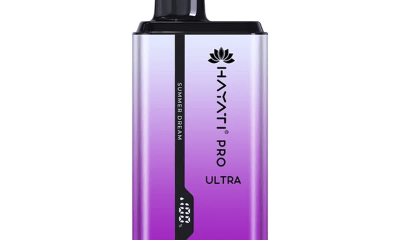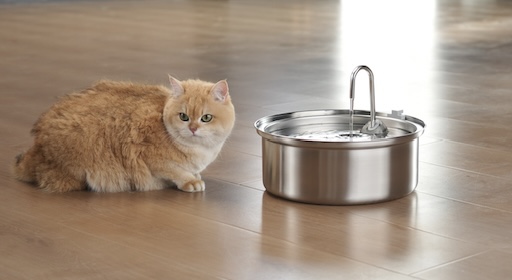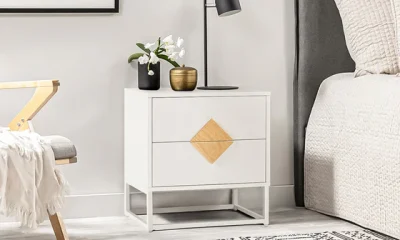Home Improvement
Tips for Getting that Industrial-Style Kitchen Look
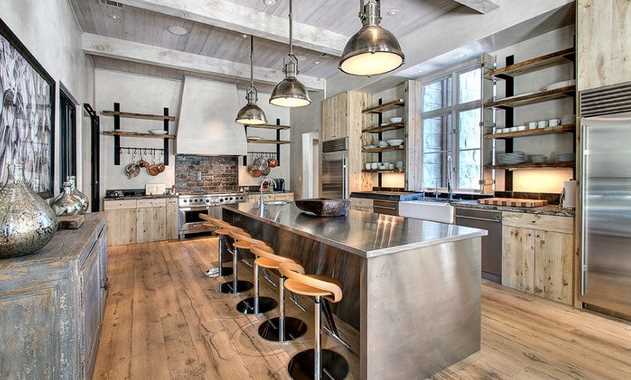
The decision to go with an industrial-style kitchen can be a bold move. The exposed wood beams, brick walls, open space, and high ceilings are all call signs of the industrial style that can be achieved. At once welcoming and eclectic, the industrial aesthetic is characterized by its use of reclaimed wood surfaces like butcher blocks and stainless-steel appliances. Traditional cabinets can tie the entire aesthetic together and create the perfect industrial-style kitchen.
If you’ve decided it’s time to renovate your kitchen and an industrial style, such as custom stainless range hoods, is intriguing to you, here are some options to consider.
Open Spaces
Industrial kitchens have become synonymous with high, soaring ceilings and wide-open spaces. Exposed brick, reclaimed woods, stainless steel, and exposed ventilation pipes bring the industrial feel to the foreground without overwhelming the overall aesthetic. Traditional cabinets set alongside stainless-steel appliances and countertops with elegant, reclaimed wood-inspired backsplashes can tie everything together. They provide the balance needed to form an elegant, harmonious, yet bold aesthetic to the room. Rustic furnishings like reclaimed wood chairs and such also draw the eye.
Cabinets
Exposed brick has its unique personality. Adding to that can be as easy as using a splash of color. Think of a light-colored brick that is enhanced by the use of elegant traditional shaker-style cabinets in a dark blue or gray. The color combination will make the room feel warm and inviting. Include stainless steel or brushed nickel hardware on the cabinets.
Beautiful, elegant cabinets create the foundation of the room. Think of traditional cabinets as the best option, whether you choose a light color or a darker approach with blues or grays. With their ability to be customized, you’re sure to find the perfect combination of style and functionality to match your needs. If you’re unsure which style to go with, companies like Authentic Custom Cabinetry can help you select and install the perfect cabinets for your home.
Appliances
The appliances in an industrial-style kitchen are meant to be heavy-duty. Think professional grade. It’s necessary to have as high performance, superb functionality as possible. A five-burner range or dual fuel model with full extension oven racks and convection would be ideal. Be sure to follow residential safety regulations. Entirely professional grade appliances may not be possible due to local zoning laws, but you can still try to get as close as possible. You will appreciate the high performance they deliver and will be able to get so much more out of your cooking with the additional heat settings these burners offer. Plus, they look fantastic.
The refrigerator can be set by itself or be built into the cabinetry. The size depends on your needs, but be sure to spend the money necessary to ensure it has the features you need for entertaining. A separate drawer for holding hors’ de oeuvres is a nice touch and will keep everything ready up to the last minute.
A dishwasher should be built into the counter and be as minimalistic as possible. A stainless-steel front with a hidden control panel is optimal.
Flooring
If you happen to have original floorboards, you are in luck. They are the perfect contrast in an industrial kitchen. The cabinets blend so beautifully with the warm timber hues. If you don’t, no worries. There are plenty of options for you to consider. There are several recycled timbers you can choose from that will bring the same elegant look.
If wood flooring isn’t for you, consider stained concrete flooring. It is commonly used in kitchens of this type and is very durable. You can also add underfloor heating to concrete flooring when it’s poured. Nothing is better than getting the morning cup of coffee and having the floor be the perfect temperature.
Other flooring options range from high gloss to tiled floors. High gloss is good because it is easy to clean, it’s very durable, and will reflect the shine of the appliances and other stainless steel in the room. Tile, on the other hand, can be a great option as well. It can be used to make a great contrast to the rest of the room. Tile can vary from the plain to the bold and striking.
Lighting
Industrial lighting is easy to identify with its fusion of classic design and modern functionality. Think pulleys or scissor arm styles. Pendant lighting is widely used. Large pendant lights are popular because you can pair them with other materials, and they complement each other. They look fantastic when several are hung in a row. Metal pendant lights can be painted any color you’d like.
Vintage LED filament bulbs bring an eclectic, industrial flair to any kitchen while providing all the light you could need. The classic design is accented with the visible glowing filaments inside the clear bulb. They tie the modern with the mid-century and keep your industrial style grounded in its roots.
Sink
When two contrasting styles collide, the outcome is generally not that great. In this case, it works flawlessly. The farmhouse sink is perfect for the industrial-style kitchen. A large farmhouse sink is big enough to handle any cleanup you can send its way. The sink’s design allows it to hold more cookware than the average sink, and with the apron-front design, you can get closer to it, meaning less strain when washing. That’s a win in my book.
Another idea is the wall-mounted faucet with a flexible hose. The commercial kitchen uses this as a way to bring the cleaning to the surface. You can use this method if you have concrete or tile flooring and a drain installed. Place the faucet above the sink.
Your dream of an industrial-style kitchen is attainable. We can help you take that dream to reality. Reach out to us to start on your remodel project today.
Home Improvement
Discover the Perfect Bedside Table for Your Room in NZ
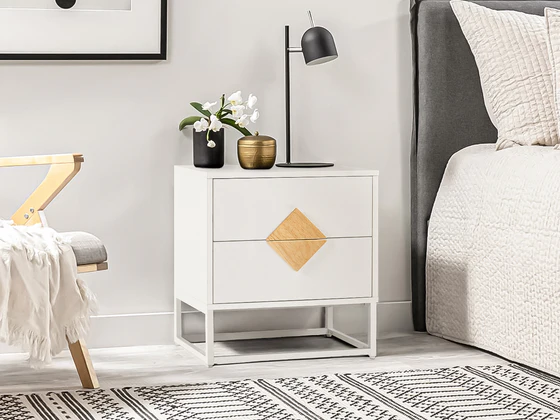

Introduction to Bedside Tables
A bedside table is a small table you keep next to your bed. It’s really helpful because you can put things like a lamp, your favorite book, or an alarm clock on it. This makes it easy to reach these items when you need them, especially at night. For example, if you need a drink of water, you don’t have to get out of bed. Besides being useful, a bedside table also makes your room look nicer. So, having a bedside table can make your life easier and your bedroom more organized and cozy.
Types of Bedside Tables in NZ
There are many different kinds of you can find bedside table NZ. First, let’s talk about the styles. Some tables are modern and have a shiny, smooth look. They often come in cool colors like black or white. Other tables might be rustic, which means they look a bit like old wood. These tables usually have a warm, cozy feeling.
Next, we can think about the materials used. Bedside tables can be made from wood, metal, or even glass. Wooden tables are strong and last a long time. Metal tables are shiny and can give your room a trendy look. Glass tables look fancy but need careful handling.
Moreover, you should consider what you like and what matches your room. For example, if your room is very colorful, a simple wooden table might be best. But if your room is very plain, a bright, metal table can add some fun. With so many options, you can find the perfect bedside table in NZ for your style!
Choosing the Right Bedside Table for Your Room
Selecting the perfect bedside table for your room in New Zealand can be fun! First, you need to think about the size. Make sure the table is not too big or too small for your space. Measure the area beside your bed and check if the table fits well. You don’t want a table that’s too tall or too short, as it should match the height of your bed.
Next, consider how much storage you need. If you like to keep many things close by, like books or gadgets, choose a table with drawers or shelves. This way, you can keep your things tidy and easy to find. However, if you don’t need much space, a simple table without drawers can be just right.
Finally, think about the table’s look. Pick a table that goes well with your room’s style. For example, if your room is modern, a sleek table might be best. But if your room is cozy, a wooden table might fit better. Remember, the right bedside table can make your room look complete and keep your things organized!
Bedside Tables Available in NZ
In New Zealand, you can find many great bedside tables. Some popular brands offer a wide variety to suit every taste. For example, Betalife has a wonderful collection of bedside tables that are both stylish and practical. They have tables that come in different colors and designs, so you can easily find one that matches your room.
You can also find bedside tables at local furniture stores. Visiting these shops allows you to see and touch the tables before you buy them. This helps you pick the one that feels just right. Plus, buying from a New Zealand store supports local businesses, which is a good thing to do!
If you prefer shopping online, there are many websites where you can find bedside tables. Online stores often have more choices and you can compare prices easily. Just make sure to check the delivery options to see if they can bring the table to your home. Whether you shop in a store or online, you’ll find the perfect bedside table in NZ!
Styling Your Bedside Table
Making your bedside table look nice is easy and fun! First, think about what to put on top of it. A small lamp can give you light for reading or writing at night. You could also add your favorite book or a cute plant to make it feel cozy.
Next, it’s important to keep your bedside table neat. Don’t pile too many things on it because that can make it look messy. Instead, choose a few special items that you use often. For example, you can keep your glasses, a clock, and a small photo frame.
Matching your bedside table with your room’s decor is also a great idea. If your room has bright colors, you can pick a table in a fun color to match. Or, if your room is simple and calm, a table in white or wood can look really nice. Adding little decorations, like a pretty tray or a colorful coaster, can make your bedside table look perfect. With these tips, your bedside table will look great and be very useful too!
Caring for Your Bedside Table
Taking care of your bedside table is important to keep it looking nice and lasting a long time. First, you should clean it regularly. For wooden tables, a soft cloth with a little polish works well. It makes the table shiny and free of dust. If your table is made of glass or metal, you can use a damp cloth to wipe it clean and then dry it with another cloth.
Protecting your bedside table from scratches and stains is also a good idea. Always use coasters under your drinks to prevent water rings. If you have heavy items, place a soft pad under them to avoid marks on the table.
Moreover, be gentle when you use your bedside table. Don’t slam drawers or put too many heavy things on it. By doing these simple things, your bedside table will stay in great shape. Remember, a well-cared-for bedside table will keep your room looking neat and stylish for years to come!
Summary
Choosing the right bedside table is essential for making your room more practical and stylish. Whether you prefer a modern look or something more classic, there are many options to explore in New Zealand. Remember to pick a table that fits your space, offers enough storage, and matches your room’s decor. Taking care of your bedside table with regular cleaning and protection will keep it looking great for a long time. So, take your time, explore your choices, and find the perfect bedside table that makes your bedroom complete and cozy.
Home Improvement
The Elegant Beauty of Quartz Countertops in Montreal
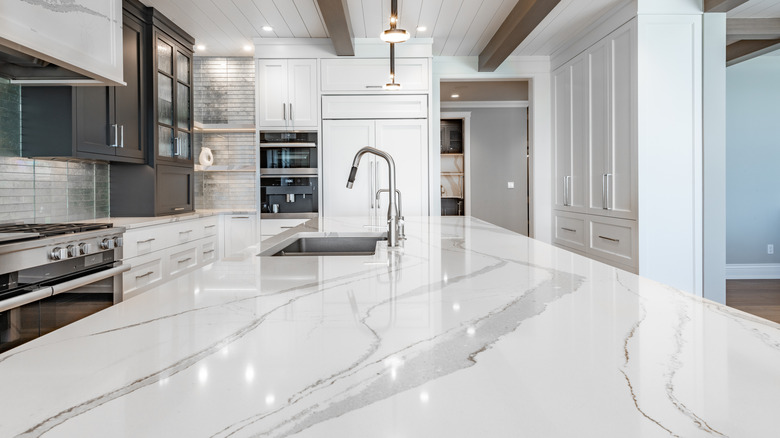

Key Takeaways:
- Montreal homeowners are embracing quartz countertops for their timeless elegance, durability, and design possibilities.
- Quartz countertops have a sophisticated appearance and come in a variety of colors and patterns to match any style.
- Quartz countertops are highly durable, resistant to scratches and chips, and non-porous, making them easy to clean and maintain.
- With advancements in manufacturing, quartz countertops can mimic the look of natural stone like marble or granite.
- When choosing a quartz countertop, consider the variety of colors and patterns, explore different edge profiles, and consider thickness and finish options.
- Installing quartz countertops enhances the value of a home, requires easy maintenance, and offers resistance to heat, stains, and scratches.
- Working with a professional quartz countertop installer ensures proper selection, installation, and care for the countertops.
- Choosing the right contractor involves research, discussing project requirements, and obtaining estimates and timelines.
- The installation process includes assessing cabinets, taking precise measurements, and securing the countertops with adhesive.
- After installation, proper care and maintenance should be followed to protect the longevity and beauty of the quartz countertops.
Welcome to our comprehensive guide on quartz countertops in Montreal. If you’re a homeowner looking to enhance the beauty and functionality of your kitchen or bathroom, quartz countertops are an excellent choice. In this guide, we will explore why Montreal homeowners are embracing quartz countertops, how to choose the perfect countertop for your home, the benefits of installing quartz countertops and working with a professional installer in Montreal. Let’s dive in!
Why Montreal Homeowners are Embracing Quartz Countertops
Montreal homeowners are increasingly turning to quartz countertops because of their timeless elegance, unmatched durability, and endless design possibilities.
The Timeless Elegance of Quartz
Quartz countertops are known for their elegant and sophisticated appearance. Unlike natural stone countertops, quartz is an engineered stone that is created by combining crushed quartz with resins and pigments. This manufacturing process allows for a wide range of colors and patterns, making quartz a versatile choice for any style of kitchen or bathroom.
Whether you prefer a classic and clean white countertop or a bold and dramatic pattern, there is a quartz countertop to suit your taste. The uniformity of quartz also makes it easy to match with other materials and colors in your space.
Unmatched Durability and Resistance
One of the key reasons why Montreal homeowners choose quartz countertops is their durability and resistance. Quartz is an incredibly hard material, ranking 7 on the Mohs hardness scale (just below diamonds). This hardness ensures that quartz countertops are resistant to scratches and chips, making them perfect for high-traffic areas like kitchens.
Additionally, quartz countertops are non-porous, meaning they are highly resistant to stains and bacteria growth. This makes them an excellent choice for kitchens where spills and food preparation are common. With proper care and maintenance, quartz countertops can retain their beauty and durability for many years.
Endless Design Possibilities
Another reason why Montreal homeowners are embracing quartz countertops is the endless design possibilities they offer. With advancements in manufacturing technology, it is now possible to create quartz countertops that mimic the look of natural stone like marble or granite.
Quartz countertops can be customized to fit any style or design preference. Whether you prefer a minimalist and sleek look or a more intricate and detailed pattern, quartz countertops can be tailored to your exact specifications. This versatility allows homeowners to create their dream kitchen or bathroom without compromising on aesthetics.
Choosing the Perfect Quartz Countertop for Your Montreal Home
When it comes to choosing the perfect quartz countertop for your Montreal home, there are several factors to consider. These include understanding the variety of colors and patterns, exploring different edge profiles, and considering thickness and finish options.
Understanding the Variety of Colors and Patterns
Quartz countertops come in a wide range of colors and patterns to suit every style and design preference. From classic white and gray to bold and vibrant colors, there is a quartz countertop to match any color scheme. You can choose a solid color for a minimalist look or opt for a patterned quartz countertop to add visual interest to your space.
When selecting a color or pattern, consider the overall aesthetic of your kitchen or bathroom. Do you prefer a neutral palette or something more bold and eye-catching? Take into account the other elements in the room, such as the cabinetry, backsplash, and flooring, to ensure a cohesive and harmonious look.
Exploring Different Edge Profiles
The edge profile of a quartz countertop can greatly impact the overall look and feel of your kitchen or bathroom. There are several edge profiles to choose from, including straight, beveled, bullnose, ogee, and more. Each edge profile has its own unique characteristics and can enhance the style of your space.
Consider the style of your home and the overall aesthetic you are trying to achieve when selecting an edge profile. For a modern and sleek look, a straight or beveled edge may be the perfect choice. If you prefer a more traditional and elegant look, an ogee or bullnose edge profile can add a touch of sophistication to your countertops.
Considering Thickness and Finish Options
Quartz countertops are available in different thicknesses, typically ranging from 1.2cm to 3cm. Thicker countertops can create a more substantial and luxurious look, while thinner countertops can provide a more contemporary and streamlined appearance. Consider the style and design of your kitchen or bathroom when choosing the thickness of your quartz countertop.
In addition to thickness, quartz countertops also come in various finishes, including polished, honed, and leathered. A polished finish provides a glossy and reflective surface, while a honed finish offers a matte and smooth appearance. A leathered finish has a textured and tactile feel, adding a unique touch to your countertops. Choose a finish that complements the overall aesthetic of your space and suits your personal preference.
The Benefits of Installing Quartz Countertops in Montreal
There are numerous benefits to installing quartz countertops in your Montreal home, including enhancing the value of your property, easy maintenance and cleanliness, and resistance to heat, stains, and scratches.
Enhancing the Value of Your Home
Quartz countertops are a desirable feature in any home and can significantly enhance its value. They are considered a premium material and are often sought after by potential homebuyers. By installing quartz countertops in your kitchen or bathroom, you can increase the resale value of your property and attract more buyers when the time comes to sell.
Easy Maintenance and Cleanliness
One of the main advantages of quartz countertops is their ease of maintenance and cleanliness. Unlike natural stone countertops, quartz does not require sealing or special cleaning products. Simply wiping the surface with a mild soap and water solution is usually sufficient to keep your quartz countertops looking their best.
Due to their non-porous nature, quartz countertops are highly resistant to stains, making them easy to clean and maintain. This is especially beneficial in kitchens where spills and food preparation are common. With quartz countertops, you can spend more time enjoying your space and less time worrying about upkeep.
Resistance to Heat, Stains, and Scratches
Montreal homeowners love quartz countertops for their remarkable resistance to heat, stains, and scratches. While it is not recommended to place hot pans directly on quartz countertops, they can withstand moderate temperatures without being damaged.
Quartz countertops are also highly resistant to stains caused by common household products, such as coffee, wine, and oil. Unlike natural stone countertops, quartz does not absorb liquids, preventing permanent staining. Additionally, the hardness of quartz makes it resistant to scratches from knives and other sharp objects, ensuring your countertops stay beautiful for years to come.
Working with a Professional Quartz Countertop Installer in Montreal
When it comes to installing quartz countertops in your Montreal home, it is essential to work with a professional installer who has experience and expertise in handling quartz. Professional quartz countertops or comptoir quartz Montreal can guide you through the selection process, ensure a proper installation, and provide advice on care and maintenance. Here’s what you need to know:
Choosing the Right Contractor for Your Project
Before hiring a quartz countertop installer, it is crucial to do your research and choose the right contractor for your project. Look for a reputable company with a track record of successful installations and satisfied customers. Read reviews, ask for references, and verify their credentials and certifications.
When meeting with potential contractors, discuss your project requirements and expectations. A professional installer should be able to provide guidance on color selection, edge profiles, and other design considerations. They should also provide a detailed estimate and timeline for the installation.
Understanding the Installation Process
The installation process for quartz countertops involves several steps to ensure a precise and secure fit. First, the existing countertops will be removed, and the cabinets will be assessed for any necessary repairs or modifications. Next, precise measurements will be taken to create templates for the quartz countertops.
Once the countertops are fabricated, they will be delivered to your home for installation. The installer will carefully position the countertops, ensuring a perfect fit and alignment. They will then secure the countertops to the cabinets using adhesive and install any necessary sink or cooktop cutouts.
Ensuring Proper Care and Maintenance
After the installation is complete, your quartz countertop installer should provide you with instructions on how to properly care for and maintain your countertops. This may include recommendations on cleaning products, precautions to take with hot items, and tips for preventing damage.
Follow these guidelines to ensure the longevity and beauty of your quartz countertops. Regularly clean spills and messes promptly, use cutting boards and trivets to protect the surface and avoid harsh cleaning products that may damage the finish.
In conclusion, quartz countertops offer a perfect blend of elegance, durability, and versatility for Montreal homeowners. Whether you’re looking to enhance the value of your home, enjoy easy maintenance and cleanliness, or have countertops that resist heat, stains, and scratches, quartz is an excellent choice. By working with a professional quartz countertop installer, you can ensure a seamless and successful installation process. Create a kitchen or bathroom that truly reflects your style and personality with quartz countertops!
Home Improvement
What is the Average Markup on HVAC Parts?
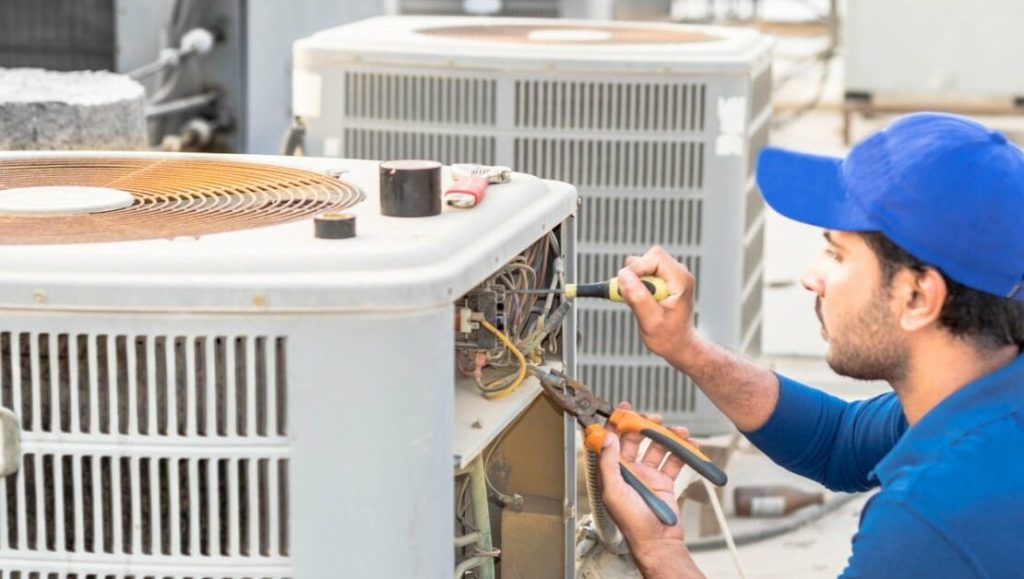

Understanding the cost structure of HVAC parts can help homeowners and businesses make informed decisions when purchasing or repairing their HVAC systems. One critical aspect to consider is the markup applied by HVAC parts suppliers. This blog will explore the average markup on HVAC parts, the factors influencing it, and how to find the best deals.
What is Markup?
Markup refers to the difference between a product’s cost price and its selling price. It is usually expressed as a percentage of the cost price. Markup covers the supplier’s expenses, such as overhead costs, labor, and profit margin.
Average Markup on HVAC Parts
The markup on HVAC parts can vary widely based on several factors. On average, the markup on HVAC parts ranges from 30% to 100%. Here are some common markups for different types of parts:
- Common Parts: Items like filters, thermostats, and capacitors typically have a markup of around 30% to 50%.
- Specialized Components: More specialized parts, such as compressors and heat exchangers, often see markups between 50% and 75%.
- Rare or Custom Parts: Due to their scarcity and the complexity of sourcing, custom or hard-to-find parts can have markups as high as 100% or more.
Factors Influencing HVAC Parts Markup
Several factors influence the markup on HVAC parts. Understanding these can help you navigate the pricing landscape and make more cost-effective purchases.
Supplier Type
Different types of suppliers have varying markups. For instance:
- Wholesale Suppliers: Typically offer lower markups because they sell in bulk to contractors and retailers.
- Retail Suppliers: Often have higher markups due to additional overhead costs and the convenience of selling directly to consumers.
- Online Suppliers: Can offer competitive pricing and lower markups by reducing overhead costs associated with physical stores.
Brand and Quality
The brand and quality of HVAC parts also affect the markup. High-quality, reputable brands usually have higher markups due to their reliability and performance. However, these parts often come with better warranties and longer lifespans, making them a worthwhile investment.
Supply and Demand
Market conditions play a significant role in determining markup. During peak seasons, such as summer and winter, when demand for HVAC parts is high, suppliers may increase markups. Conversely, during off-peak times, markups may be lower due to reduced demand.
Inventory Costs
Suppliers must account for the costs of storing and managing inventory. Parts that are expensive to store or have slow turnover rates may carry higher markups to cover these additional expenses.
Shipping and Logistics
The cost of shipping and logistics can significantly impact the final price of HVAC parts. Heavy, bulky, or special-handling parts may have higher markups to cover these costs.
How to Find the Best Deals on HVAC Parts
While markups are a standard part of the pricing structure, there are ways to find competitive prices and reduce costs when purchasing HVAC parts.
Compare Prices
One of the most effective ways to ensure you’re getting a fair price is to compare prices from multiple HVAC parts suppliers. Online platforms make it easy to compare prices and find the best deals.
Buy in Bulk
If you need multiple parts or frequently require HVAC components, consider buying in bulk. Wholesale suppliers often offer discounts for bulk purchases, reducing the overall markup.
Look for Sales and Promotions
Many suppliers offer sales, promotions, or discounts throughout the year. Keep an eye out for these opportunities to purchase parts at lower prices.
Build Relationships with Suppliers
Establishing a good relationship with your HVAC parts supplier can lead to better pricing and service. Loyal customers may receive discounts, priority service, or access to special promotions.
Opt for Generic Brands
While brand-name parts are often preferred for their quality and reliability, generic or off-brand parts can be a cost-effective alternative. Ensure that these parts meet the necessary specifications and quality standards.
Consider Used or Refurbished Parts
For some applications, used or refurbished HVAC parts can be a viable option. These parts are typically less expensive than new ones but should be sourced from reputable suppliers to ensure quality and reliability.
Conclusion
The average markup on HVAC parts varies based on factors such as supplier type, brand, quality, and market conditions. By understanding these factors and implementing strategies like price comparison, bulk purchasing, and taking advantage of promotions, you can find competitive prices and reduce the overall cost of maintaining your HVAC system. Building a relationship with a trusted HVAC parts supplier can also provide long-term benefits, including better pricing and reliable service.
-



 Biography5 years ago
Biography5 years agoJacqulyn Elizabeth Hanley is the Mother of Liza Soberano?
-



 Home4 years ago
Home4 years agoEpson L3110 Driver Free Download Latest Updated Version
-



 Games3 years ago
Games3 years agoBest Free To Play MMORPG To Try This 2021
-



 Biography5 years ago
Biography5 years agoAmanda Levy Mckeehan Biography, Family, Net Worth, Age, Affairs, Facts
-



 Biography5 years ago
Biography5 years agoWho is Rose Dorothy Dauriac? Scarlett Johansson Daughter?
-



 Biography5 years ago
Biography5 years agoJessica Ditzel Secret Information that Nobody Knows | Joe Rogan’s Wife
-



 Biography5 years ago
Biography5 years agoWhat is the relation of Nathaniel Larry Osorno with Liza Soberano?
-



 Home5 years ago
Home5 years agoLiza Soberano Biography, Age, Family and Boyfriends



